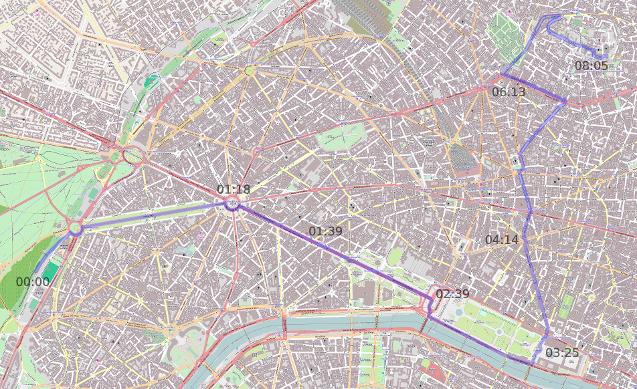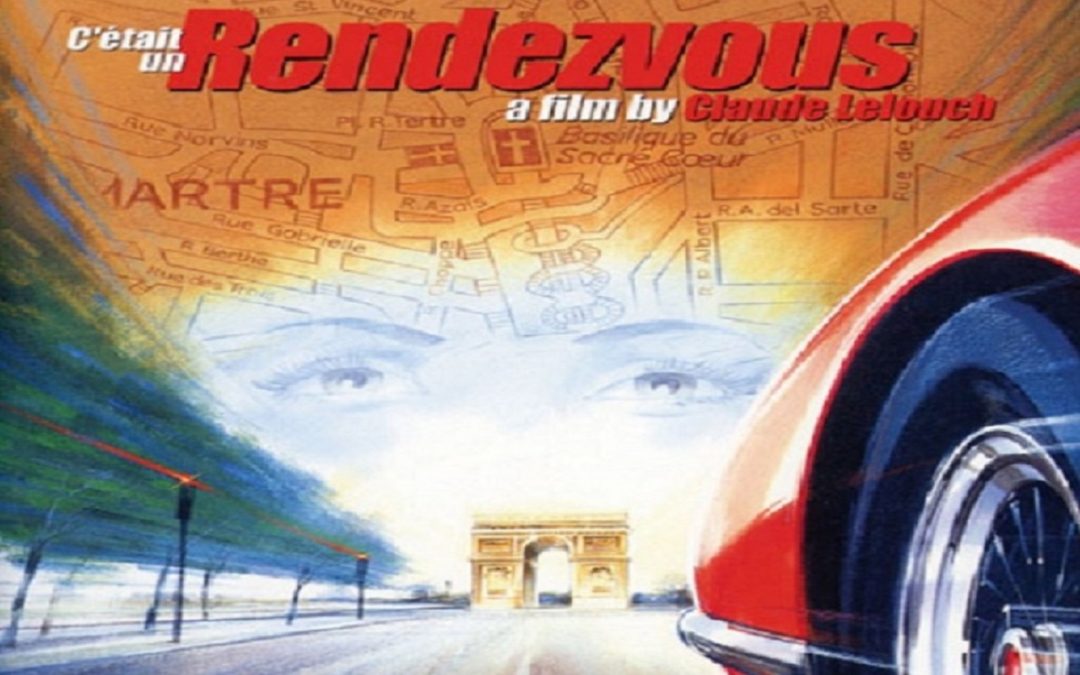C'etait un rendez-vous
Genre: Reality
Released: 1978
Director: Claude Lelouch
Run time: 8;36 min
Platform viewed: You tube
Clichés: The beauty of racing
My rating: Five Hartley's

I have a strong dislike of reviews that say over the top things like ‘rebellious, anti-establishment and poignant’. None the less this, is a poignant, rebellious, anti-establishment masterpiece. It’s also romantic, romantic because it is shot in Paris, romantic because it shows a frantic drive across the city to rendezvous with a lover and romantic for those of us who love the sound of classic sports cars. For me this film was eight minutes and thirty-six seconds of pure irresponsible joy.
If I’m honest I only recently became aware of this film after Ferarri announced they were doing a remake around the streets of Monaco with Charles Leclerc at the wheel. Filmed in 1976, more recently this film has been labelled ‘the most important street racing film ever made’. Essentially you could probably also call it the first viral car racing video ever made, despite the prominence of the film in racing circles, it could probably still be considered a viral video.
The plot is damn simple, a driver, essentially anonymous, races across Paris from Porte Dauphine to Montmartre, to a rendezvous with a beautiful young woman.
Put this way the film does not sound all that dramatic until we consider that the film was shot in one take, on open Paris streets and Lelouch made the 10.5 km trip in around 8 minutes at an average speed of 80 kph. It is not just the driving that makes this film dramatic, but the combination of this with the immersive sound. It starts with a few beats of a pounding heart and then the glorious sound of a Ferrari 275 GTB being driven at speed. The film concludes with silent embrace between the driver and the beautiful woman he was racing to meet.
The big questions that everyone has in their minds while watching the film are usually along the lines of; “is this real!!”, “How was it done?” and “Where are the hell are the cops?”, or as you might put in French ‘ou est la Gendarme!’.
First question, is it real? In short, yes, the film is real, filmed in real time on open Paris streets. Although the sound was dubbed over the original film. In order to get the best possible camera footage Lelouche needed to drive car that had a smooth enough ride to stabilise the image particularly because the Paris streets are bumpy and, in some places, cobbled. For this reason, the car used in the actual drive was Lelouch’s Mercedes 450 SEL which had hydropneumatic suspension. The rich sounds of the Ferrari 275 GTB engine and squealing tires were dubbed in later. The dubbing of the sound is not 100% perfect, but it is still good enough to give an excellent feeling of realism.
The next part that is real is the rendezvous itself. Lelouch apparently had phoned ahead to his girlfriend, Gunilla Friden, stating he would meet her at Montmartre, a romantic Paris lookout in 10 minutes. In my opinion a rendezvous with Gunilla Friden, a model and former Miss Sweden, is well worth the risks of death or arrest that Lelouch took to get to her so quickly.
Second question, how was it done? Given that we have already covered off the car that was used and the sound I want to focus on the drive itself. First of all, Lelouch did not do this on his own. In the car he had two passengers to assist with the filming and he had one strategically placed spotter.
The spotter is probably one of the most controversial aspects of the filming. Lelouch had planned the route to Montmatre in advance. While he clearly backed his driving ability and would be taking a great deal of risk on the journey, he was concerned about one point of the route in particular. This was the exit of the tunnel on the Rue de Rivoli near the Louvre. The exit of the tunnel was essentially blind into a short one-way lane in the wrong direction. Lelouch had assessed this is where there was the greatest risk of a catastrophic head on collision. The spotter’s job was only to warn Lelouch if there was any risk of a collision and remain silent if the coast was clear. Unfortunately, on the day the spotters radio actually failed, so Lelouch would have never received pre-planned warning and blazed through the intersection blind. Luck was on his side.
For anyone who has been to Paris you will understand that driving around, even when it is not busy, is not straight forward. I have included a map of the route below and you can see Lelouch planned the least complex route he could, while also ensuring that a good number of significant landmarks would be on camera too. Noticeably, the early part of the route mostly utilises some of the wider avenues in Paris such as the Champs Elysees. This is where the greatest speeds were achieved. According to Lelouch he reached a top speed of 225kph. This is possible, but even in the fastest section, reviews of the footage have calculated his average speed to be around 122kph and only for a relatively short section of the route.
Last question, where are the cops? Not only was the route pre-planned but Lelouch was also strategic when he chose an early dawn run on a specific Sunday in August. August is a traditional holiday month in Paris, especially in 1976, and on a Sunday, this was likely to be the quietest possible time on the streets. Presumably Lelouch also considered the fact that the local Gendarmerie would also be taking a bit of break reducing the chances that he would get busted. Interestingly Lelouch had actually asked the city planners for permission to shoot the film legally, the answer was a stern “Non!”. Oh well, at least he tried.
After the release of the film the cops did actually catch up with Lelouch. The film was irrefutable evidence of some extremely dangerous and illegal driving (18 red lights if you are counting). The trouble for the cops is that in the film the driver is anonymous, a fact that Lelouch was quick to point out after his arrest. Lelouch apparently told the Police that the car was driven by “a formula one driver”. This got Lelouch off the hook but lead to a great deal of speculation and rumour as to who the driver actually was, these rumours frequently centred around Jacques Lafitte.
This film is a racing masterpiece, it captures the beauty of driving, the beauty of Paris and the recklessness that beauty and love can evoke in people. In Claude Lelouch’s own words “I made the movie as a gift of this moment of madness. The movie is very symbolic of my life. We did many forbidden things, as I often have in life”.

© Copyright Racing Films
